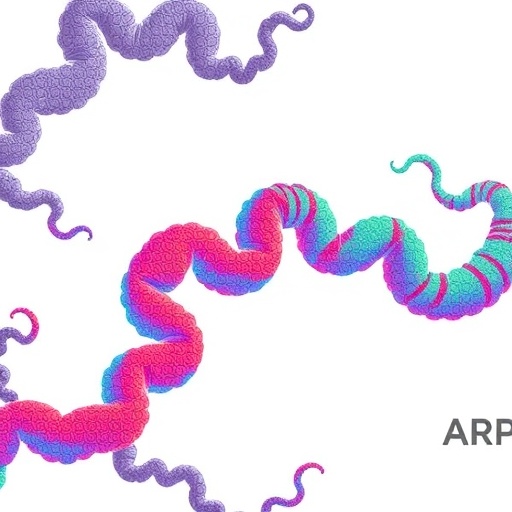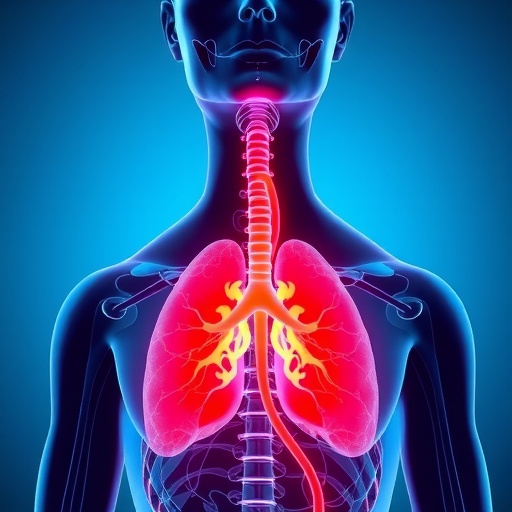In a groundbreaking advance that promises to redefine our understanding of cardiometabolic health, a recent study led by Ye, C., Dou, C., and Liu, D. unveils novel genetic loci linked to insulin resistance through comprehensive multivariate genome-wide analyses. Published in Nature Communications, this research provides deep insights into the molecular underpinnings of insulin resistance and reveals potential therapeutic targets that may pave the way for innovative strategies to combat cardiometabolic diseases, a leading global health burden.
Insulin resistance, a hallmark of type 2 diabetes and associated metabolic disorders, has long intrigued scientists due to its complex genetic architecture and multifaceted interactions with environmental factors. Traditional genome-wide association studies (GWAS) have identified numerous loci related to insulin resistance, but the heterogeneity of the phenotype often obscures the discovery of loci that contribute to shared biological pathways. This latest study leverages advanced multivariate statistical models designed to integrate multiple insulin resistance-related traits simultaneously, significantly enhancing the power to detect novel genetic variants that would have been missed by univariate approaches.
The authors utilized large-scale datasets comprising genetic and phenotypic information from diverse populations, enabling a robust cross-trait genetic analysis. This approach allowed them to pinpoint loci associated not only with direct measures of insulin sensitivity but also with related cardiometabolic traits including lipid profiles, blood pressure, and inflammatory markers. By mapping this intricate genetic landscape, the research team identified several previously unreported genomic regions, which collectively elucidate new biological mechanisms contributing to insulin resistance.
Central to their findings is the discovery of loci involved in metabolic pathways that regulate glucose homeostasis and lipid metabolism. Many of these loci are located near genes encoding proteins integral to insulin signaling cascades and cellular energy balance. Notably, some genetic variants were linked to pathways influencing mitochondrial function and oxidative stress response, corroborating emerging evidence that mitochondrial dysfunction plays a crucial role in the development of insulin resistance and its progression towards overt cardiometabolic disease.
Beyond identifying these loci, the researchers conducted extensive functional annotation and expression quantitative trait loci (eQTL) analyses to explore potential gene regulatory mechanisms. This integrative strategy shed light on how certain variants modulate gene expression in metabolically active tissues such as adipose tissue, liver, and skeletal muscle. The tissue-specific effects highlighted by the study provide a refined understanding of the spatial dynamics underlying insulin resistance and highlight candidate genes that could be prioritized for experimental validation.
This multidisciplinary effort also extended to translational endeavors, where the newly uncovered genetic targets were evaluated against existing pharmacological data. Intriguingly, several loci overlapped with genes targeted by drugs currently approved for other indications, suggesting the potential for drug repositioning. This opens a promising avenue for accelerating the development of therapeutics aimed at improving insulin sensitivity and mitigating the burden of cardiometabolic disorders by harnessing previously untapped molecular targets.
The use of multivariate genome-wide analyses as demonstrated in this study marks a significant methodological breakthrough. Traditionally, GWAS has been challenged by phenotypic complexity and the need to correct for multiple testing, often limiting the resolution of detectable signals. The multivariate approach elegantly circumvents these limitations by capitalizing on shared genetic architectures among correlated traits, thereby increasing statistical power and yielding more biologically coherent signals.
Moreover, the large and ethnically diverse sample cohorts employed ameliorate concerns about population stratification and improve the generalizability of the findings. This multi-ancestry framework not only identifies universal genetic determinants of insulin resistance but also underscores population-specific variants that might contribute to disparities in disease prevalence and outcomes, emphasizing the necessity of inclusive genetic research for precision medicine.
These novel insights into the genetic etiology of insulin resistance are poised to impact clinical practice profoundly. By delineating key molecular players, clinicians may soon be able to stratify patients based on their genetic risk profiles, enabling personalized interventions targeting distinct pathogenic pathways. This could lead to more effective prevention strategies and the rational design of combination therapies tailored to individual genetic backgrounds.
The implications of this study resonate beyond insulin resistance itself, as cardiometabolic diseases encompass a broad spectrum of conditions including coronary artery disease, stroke, and metabolic syndrome. The identified genetic variants not only shed light on insulin resistance but also imply interconnected biological networks influencing multiple cardiometabolic endpoints. Consequently, therapeutic innovations inspired by these findings could offer holistic benefits, addressing the root causes of cardiometabolic risk comprehensively.
In addition to genetic discoveries, the study’s integration of multi-omics data, encompassing transcriptomic and epigenomic layers, illustrates the value of systems biology approaches in elucidating disease mechanisms. Such layered interrogation facilitates the unraveling of complex gene-environment interactions that contribute to phenotypic heterogeneity and differential treatment responses, setting the stage for refining molecular classifications of cardiometabolic diseases.
Looking ahead, the authors advocate for expanding these analytical frameworks to incorporate longitudinal data and environmental exposures, which would further enrich the understanding of insulin resistance dynamics over time. The convergence of genetics, epidemiology, and bioinformatics showcased in this study exemplifies the future of biomedical research, where multidisciplinary collaboration unlocks transformative potentials for human health.
This pioneering work by Ye and colleagues not only highlights the power of next-generation genetic analyses but also underscores the critical importance of precision medicine in tackling the escalating epidemic of cardiometabolic disorders. By forging new paths to identify genetic determinants and actionable therapeutic targets, this study heralds a new era in personalized healthcare focused on insulin resistance and its devastating sequelae.
As the scientific community builds upon these findings, the translation of genetic insights into effective clinical tools will remain paramount. Future clinical trials inspired by these novel loci and biological pathways will likely catalyze the development of innovative drugs and diagnostic biomarkers, ultimately reducing the incidence and severity of insulin resistance-related diseases on a global scale.
The fusion of cutting-edge genomic methodologies with clinical ambition presented in this study paves the way for a judicious and impactful transformation in the prevention and management of cardiometabolic health. This research exemplifies how rigorous scientific inquiry, when coupled with technological innovation, can unravel the complex genetic mosaic underpinning chronic diseases, offering hope for millions to live healthier, longer lives.
Subject of Research: Insulin resistance genetics and cardiometabolic disease mechanisms.
Article Title: Multivariate genome-wide analyses of insulin resistance unravel novel loci and therapeutic targets for cardiometabolic health.
Article References:
Ye, C., Dou, C., Liu, D. et al. Multivariate genome-wide analyses of insulin resistance unravel novel loci and therapeutic targets for cardiometabolic health. Nat Commun 16, 10057 (2025). https://doi.org/10.1038/s41467-025-64985-9
Image Credits: AI Generated
DOI: https://doi.org/10.1038/s41467-025-64985-9
Tags: advanced statistical models in geneticscardiometabolic health researchcomprehensive GWAS methodologiescross-trait genetic analysisenvironmental factors in insulin resistancegenetic insights into insulin resistanceinnovative strategies for cardiometabolic diseasesmetabolic disorders and geneticsmultivariate genome-wide analysesnovel genetic loci discoverytherapeutic targets for diabetestype 2 diabetes genetic architecture






